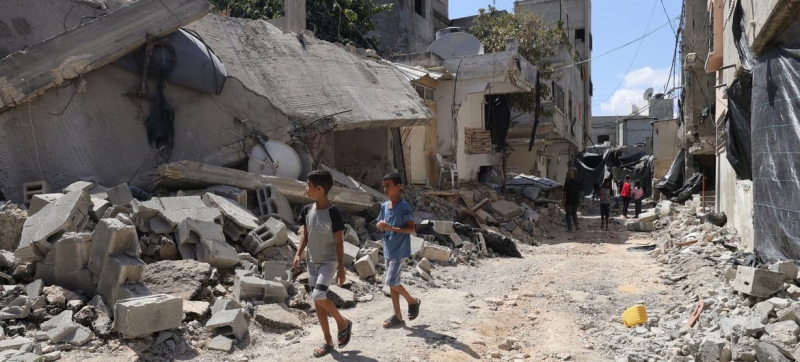
Families forced to flee their West Bank homes. Gaza war: Palestine set back nearly 70 years in development Economic development
The Gaza war, which has been going on for more than a year now, and the escalation in the West Bank, have set the development level of the State of Palestine back some 69 years, according to a UN report released on Tuesday.
“Unless economic restrictions are lifted and reconstruction efforts and development investments are ensured, the Palestinian economy may not be able to recover to pre-war levels and move forward and will be entirely reliant on humanitarian assistance,” says the report “Gaza War: Expected Socioeconomic Impact on the State of Palestine,” prepared by the United Nations Development Programme (UNDP) and the United Nations Economic and Social Commission for Western Asia (ESCWA).
Alarm Signal
The authors of the study propose three scenarios for the recovery of Palestine. The report projects immediate developments to 2025 and also assesses the long-term impacts expected by 2034, ten years after the conflict began.
“Our estimates sound the alarm as millions of lives have been destroyed and decades of development efforts have been undone,” said ESCWA Executive Secretary Rola Dashti.
“It is time to end the suffering and bloodshed that has engulfed our region. We must come together to find a lasting solution in which all peoples can live in peace, dignity and sustainable development, while respecting international law,” she added.
Palestinian gross domestic product (GDP) is projected to contract by 35.1 percent in 2024 compared to a no-war scenario, and unemployment could rise to 49.9 percent.
Recovery Scenarios
Based on the findings of previous studies, the report’s authors estimate that the poverty rate in Palestine will rise to 74.3 percent in 2024. Thus, 4.1 million people will fall below the poverty line, including 2.61 million people who did not previously face this problem.
UN experts assess the scale of deprivation using multidimensional poverty measures and examine the prospects for Palestine’s development after the ceasefire, and propose three early recovery scenarios.
The best of these, the “unrestricted” early recovery scenario, would lift restrictions on Palestinian workers and return withheld revenues to the Palestinian Authority. In addition to $280 million in humanitarian aid, $290 million would be allocated annually for recovery work. This should lead to an increase in productivity of one percent per year and return the economy to productive activity.
Read also:
A year of war in Gaza: an unprecedented contraction of the Palestinian economy
A comprehensive recovery and reconstruction plan that combines humanitarian assistance with strategic investments and the lifting of economic restrictions could help put the Palestinian economy on track by 2034, according to estimates.
Such a scenario can only be realized if recovery efforts are not constrained, said UNDP Administrator Achim Steiner.
“The findings of the new study confirm that, in addition to the immediate suffering and horrific loss of life, a serious development crisis is also unfolding, jeopardizing the future of Palestinians for generations to come,” he said.
Estimates suggest that even if humanitarian assistance continues to flow into the sector, it will take a decade or more for the economy to return to pre-crisis levels, he said. level.
Humanitarian situation worsens
Meanwhile, the catastrophic humanitarian situation continues to worsen by the day, UNDP spokeswoman Chitose Noguchi told reporters in Geneva, speaking from Deir el-Balah, where many Gazans are currently sheltering.
“The State of Palestine is experiencing an unprecedented setback in its development to 1955,” Noguchi said.
“The restrictions that are currently strangling the economy must be lifted,” she stressed.
Socioeconomic assessments are also currently being conducted in Lebanon and Syria.
